It is a strange exhibition at first sight. Couples are standing positioned in the centre of the photographs. Some of the couples are young and the woman is very pregnant. Some are older. Overall, the atmosphere they create is not happy. There is something that feels a little bit weird about them. They are ordinary people in simple, sometimes puritan surroundings – nothing really special – but they make me feel a little depressed. They don’t seem to me to fit into “documentary” photography.
But apparently they are documentary photographs in some ways as the artist is researching the opposite ends of “nesting”: when the nest is awaiting the arrival of a new baby and when it’s empty after the children have left. The days or months in the titles of the images tell us how long the young couples have to wait till the birth or the time passed by since the children left. I don’t know how much people without children will be able to get from this exhibition, but I, like the artist, have experienced both sides and the whole untold story in between. For me it tells a lot.
 Kristin and Ryan, 18 Days, 2006 © Dona Schwartz, Courtesy of Stephen Bulger Gallery
Kristin and Ryan, 18 Days, 2006 © Dona Schwartz, Courtesy of Stephen Bulger Gallery
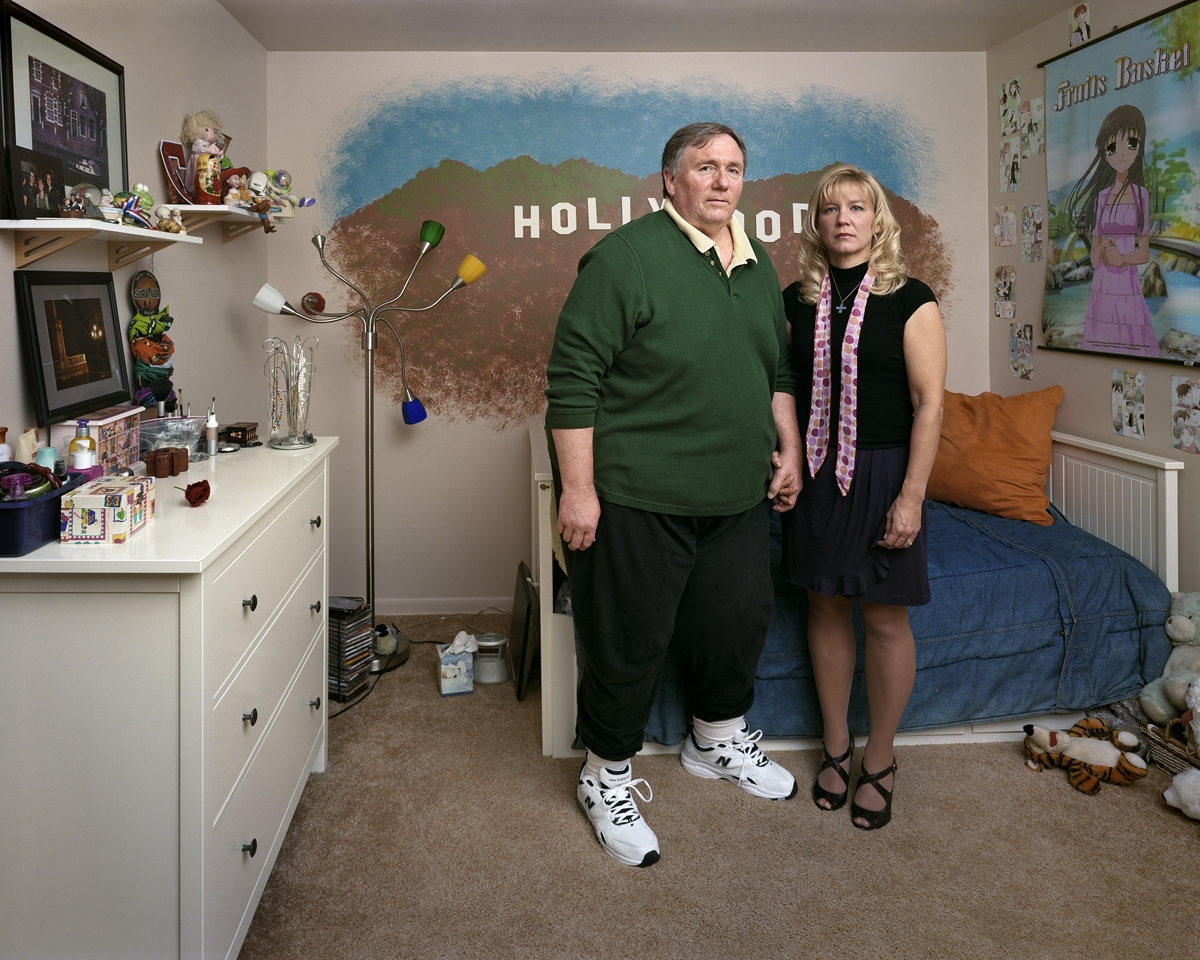 Pam and Bill, 2 Months, 2010 © Dona Schwartz, Courtesy of Stephen Bulger Gallery
Pam and Bill, 2 Months, 2010 © Dona Schwartz, Courtesy of Stephen Bulger Gallery
It is all about children but it is their total absence from the images that tells the story: they haven’t arrived yet and – as though nothing happened in between – they are already gone. Still they create the whole picture of parenthood by involving the past (the expecting part) and the future (the empty nest). None of the parents seem to fully understand what is awaiting them. As the wall text in one of the images states: “Our lives are about to change in unimaginable ways, and I have no idea what that will look like.” That’s the only certainty. Andrea might need to leave the army – there may be no more deployments to Iraq, she and Brad might not be on the same mission for a while. People will curiously stare at Bobby and Kevin when they push their baby stroller around the park. Watching games will be difficult, even at home on TV, when they’re interrupted by cries, feeding and changing. Having children is a big change and one so final that you can’t go back – and there will be numerous unrewarded moments and dashed hopes that the future hides. Many of these marriages may break under the strain. Fortunately the couples don’t know what lies ahead.
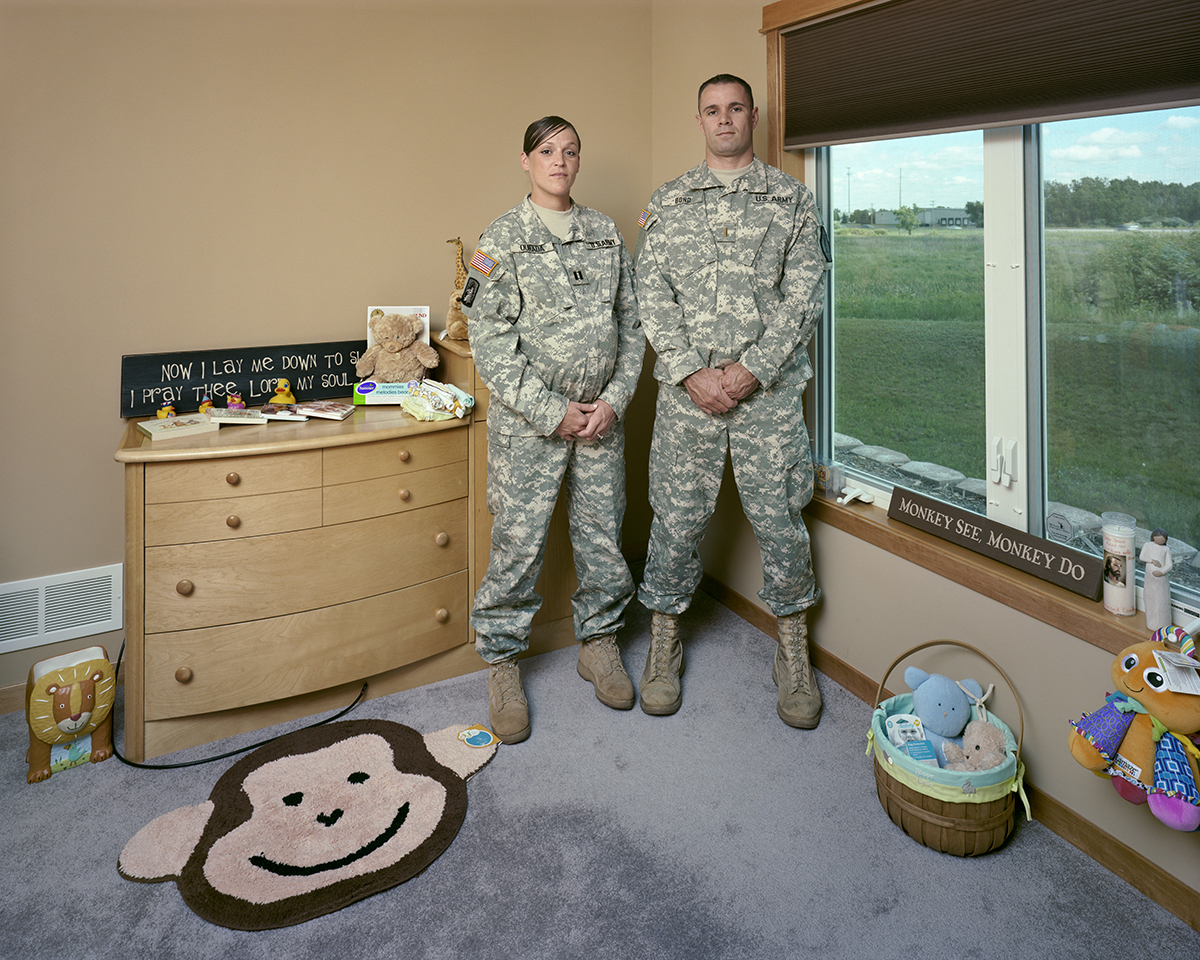 Andrea and Brad, 16 Days, 2009 © Dona Schwartz, Courtesy of Stephen Bulger Gallery
Andrea and Brad, 16 Days, 2009 © Dona Schwartz, Courtesy of Stephen Bulger Gallery
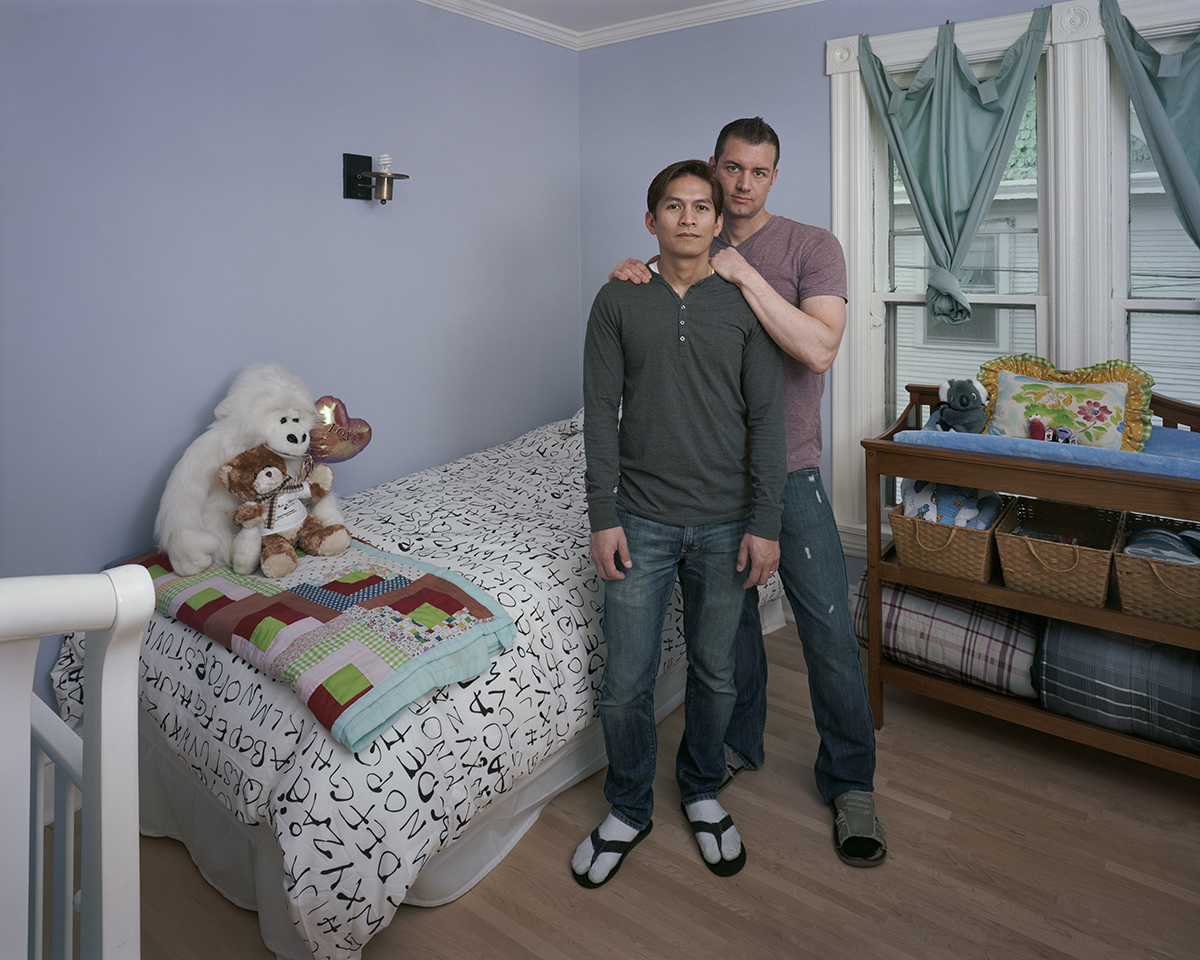 Bobby and Kevin, Waiting to Adopt, 2012 © Dona Schwartz, Courtesy of Stephen Bulger Gallery
Bobby and Kevin, Waiting to Adopt, 2012 © Dona Schwartz, Courtesy of Stephen Bulger Gallery
In each image, the faces and body language tell the story, especially in the images of the empty nesters. They are tired, burnt out, suddenly old and without purpose. The expecting ones are the blessed ones. “There’s such sweetness and innocence,” said Dona Schwartz. “That’s something they’ll never experience again because the moment will pass. I look at them while I’m editing the photos on screen, and sometimes, it brings tears to my eyes. I feel like they’re so beautiful and so innocent, in the best possible way.”
They certainly have a picture in their minds about their future child’s personality. The baby’s room is freshly painted and decorated. The new arrivals will be greeted with stuffed animals in large numbers, providing softness and warmth. Some of the kids already have their names on the wall while others will look at celestial symbols or quotes from the bible – bringing the meaning of life into the small place. They are responsible parents who will take excellent care of their children – or at least that’s the plan. Nicole and Stephen have stuffed the cupboard with so many color-coded little clothes and shoes that the child will grow out of before they are worn at all. After all of these plans and good intentions, will these children fulfill their dreams?
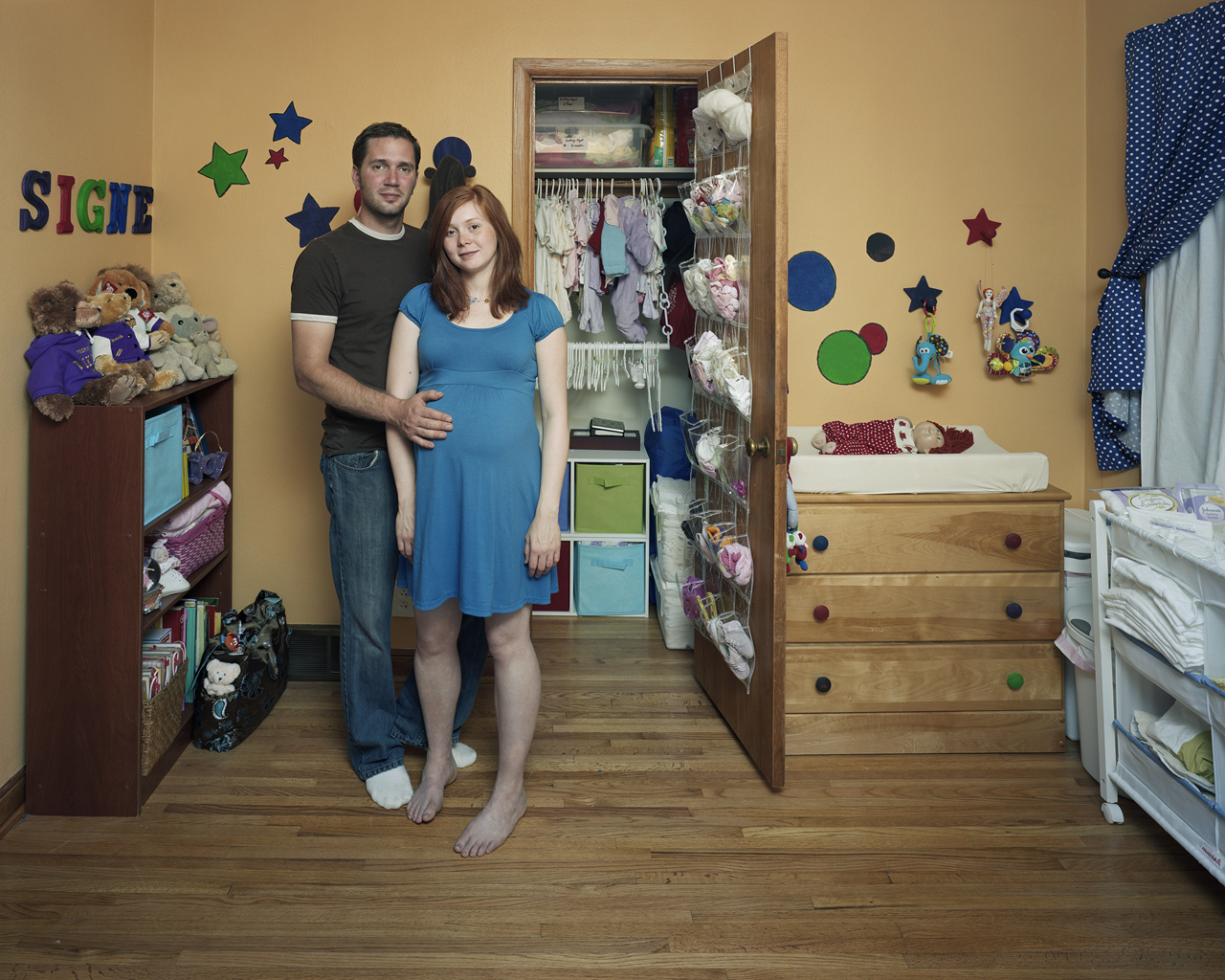 Nicole and Stephen, 14 Days, 2008 © Dona Schwartz, Courtesy of Stephen Bulger Gallery
Nicole and Stephen, 14 Days, 2008 © Dona Schwartz, Courtesy of Stephen Bulger Gallery
Their naïve faces show how idealistic they are. They will learn soon enough what it really means to be a parent. We all thought that the baby-time, when they couldn’t walk or talk was the most difficult. Then the teenage years came and we became the main target of their strengthening will and intellect – ending up battling with television-, internet- and Facebook-educated youngsters, in a battle we could never win. Suddenly they are gone after about 20 years of struggle and we recognize that the space they filled up in our house and in our life is so empty. Some of us are luckier than others, still having a career and children who stay nearby and become our friends. But not all of us.
The expecting ones are also the more celebrated. There are baby showers, lunches with friends who admire the growing tummies of the new mother-to-be, secretly envying it or hiding their disapproval, but still giving credit to their bravery. The expecting ones soldier on – not just the women but the men as well, who are more sensitive than ever, taking part in all of it. Lately I’m getting e-mails from my men friends attaching grey ultrasound images, stating: we are pregnant – a miracle indeed (for the man, I mean). Schwartz’s portraits also present what we call the “New American Nuclear Family”: single parents, mixed-raced, gay and lesbian couples among them.
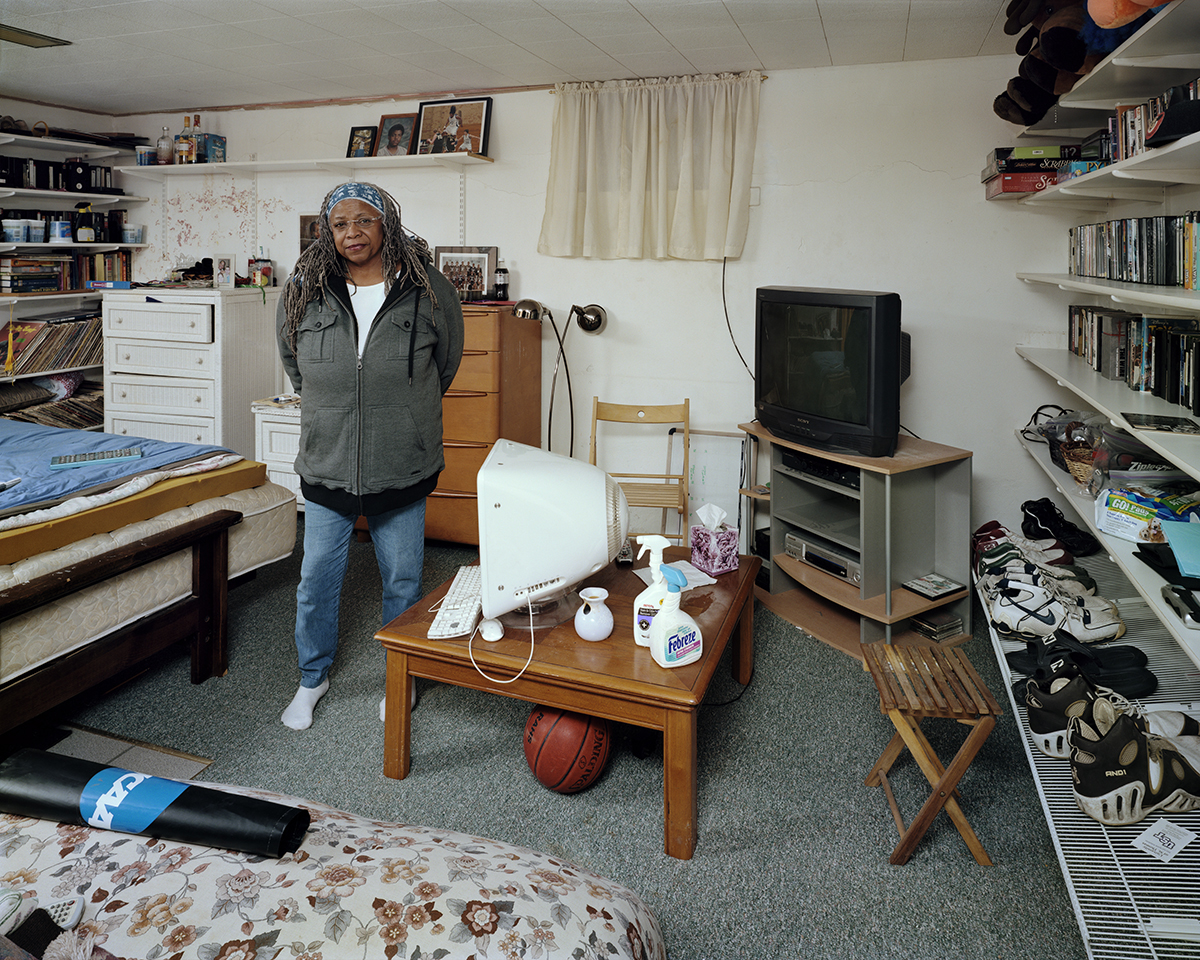 Leola, 3 Months, 2012 © Dona Schwartz, Courtesy of Stephen Bulger Gallery
Leola, 3 Months, 2012 © Dona Schwartz, Courtesy of Stephen Bulger Gallery
 Chris and Susan, 7 Months, 2012 © Dona Schwartz, Courtesy of Stephen Bulger Gallery
Chris and Susan, 7 Months, 2012 © Dona Schwartz, Courtesy of Stephen Bulger Gallery
Schwartz started to photograph pregnant couples in 2006. All these photographs involved serious planning. The artist visited the couples in their homes, took some shots and analyzed them in order to decide what to focus on. She used a tripod, carefully calculated the lighting and then decided what would be included in the photograph. This selective framing is what makes the images so powerful.
In the exhibition, the photographs talk for themselves. Those stages of life are not just about the happiness of expecting or the nostalgia for the years with children, but also the anxiety and responsibility to the child, to society and even to God, as the parents say in the book of the same title. In both cases they face a life that never will be the same again. No surprise that almost none of them smile. There is foreboding there too, anticipating hardship, sadness, and worry about the unknown. I can almost feel how much they are trying to stay in control and to keep that psychological and emotional burden from bursting out of them.
With these photographs Schwartz has – maybe even against her own intentions – created something much more than documenting stages of life: ART.
Emese Krunák-Hajagos
*Exhibition information: January 23 – February 27, 2016, Stephen Bulger Gallery, 1026 Queen Street West, Toronto. Gallery hours: Tue – Sat, 11 – 6 p.m.
